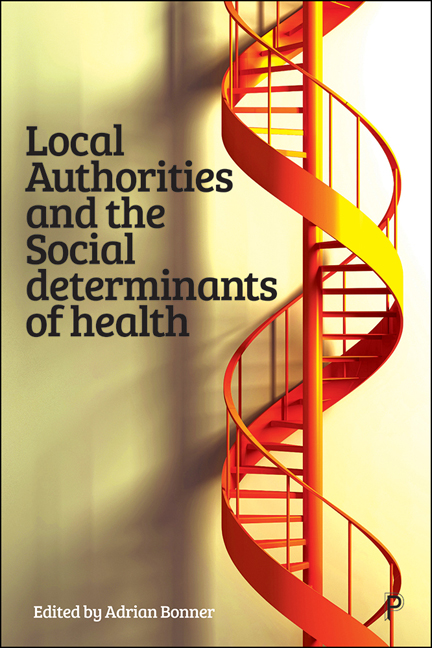Book contents
- Frontmatter
- Dedication
- Contents
- List of Figures, Tables and Boxes
- Notes on Contributors
- Acknowledgements
- Foreword
- Summary
- Introduction: Key Sociopolitical Changes Affecting the Health and Wellbeing of People
- Part I Health, Social Care and Community Wellbeing
- Part II The Role of Local Authorities in Promoting Health and Wellbeing in the Community
- Part III Local Authority Commissioning
- Part IV The Third Sector
- Part V Socio-Economic Political Perspectives
- Conclusion
- Appendix: COVID-19 Timeline
- Index
Introduction
Published online by Cambridge University Press: 25 March 2021
- Frontmatter
- Dedication
- Contents
- List of Figures, Tables and Boxes
- Notes on Contributors
- Acknowledgements
- Foreword
- Summary
- Introduction: Key Sociopolitical Changes Affecting the Health and Wellbeing of People
- Part I Health, Social Care and Community Wellbeing
- Part II The Role of Local Authorities in Promoting Health and Wellbeing in the Community
- Part III Local Authority Commissioning
- Part IV The Third Sector
- Part V Socio-Economic Political Perspectives
- Conclusion
- Appendix: COVID-19 Timeline
- Index
Summary
Local authorities have a key role in shaping public services, and to a large extent this is influenced by the approaches to commissioning and infrastructural arrangements within the local authority. The establishment and effectiveness of health and wellbeing boards (HWBs), working with Clinical Commissioning Groups, should provide leadership in culture change leading to effective integration health and social care. However, there was a mixed performance of HWBs across England, as reported in Chapter 4.
The role of local authority commissioning is the focus of Part III of this book. Bridging these two parts of the book is Part II, which provides insights into local authority responses from a ‘place-based’ perspective.
The Localism Act and the Care Act, conceived by the Coalition government in 2010, were well intentioned legislative changes which have brought a major cultural shift in thinking, and planning. However, their implementation has been undermined by austerity budgeting by Central government which has resulted in a continued reduction of funds available for local authorities. An example of this is the Revenue Support Grant [for local authorities] which has been reduced to 50% of the 2010 value in 2019, and will be abolished by 2020. Local authorities now find themselves in a bind of having greater responsibilities for their communities but with decreasing funding to support their responsibilities. The Chartered Institute of Public Finance and Accountancy (CIPFA) has indicated, in May 2019, that 11 of the 152 English councils are at risk of running out of cash reserves. The Local Government Association, reporting on the ‘systematic underfunding’ of councils, pointed to ‘children's services at breaking point’ (see Chapter 11). A ‘resilience’ index of councils, published by CIPFA, highlighted those councils that had the fastest depletion rates of their reserves. ‘Reducing reserve levels means that local authorities have less scope to support “invest to save” programmes [such as health prevention; see Chapter 4] and any delays in delivering savings or unexpected cost pressures have a greater impact on their financial position’ (NAO, 2018); see Figures 18.1 and 18.2 in Chapter 18.
- Type
- Chapter
- Information
- Local Authorities and the Social Determinants of Health , pp. 83 - 88Publisher: Bristol University PressPrint publication year: 2020

